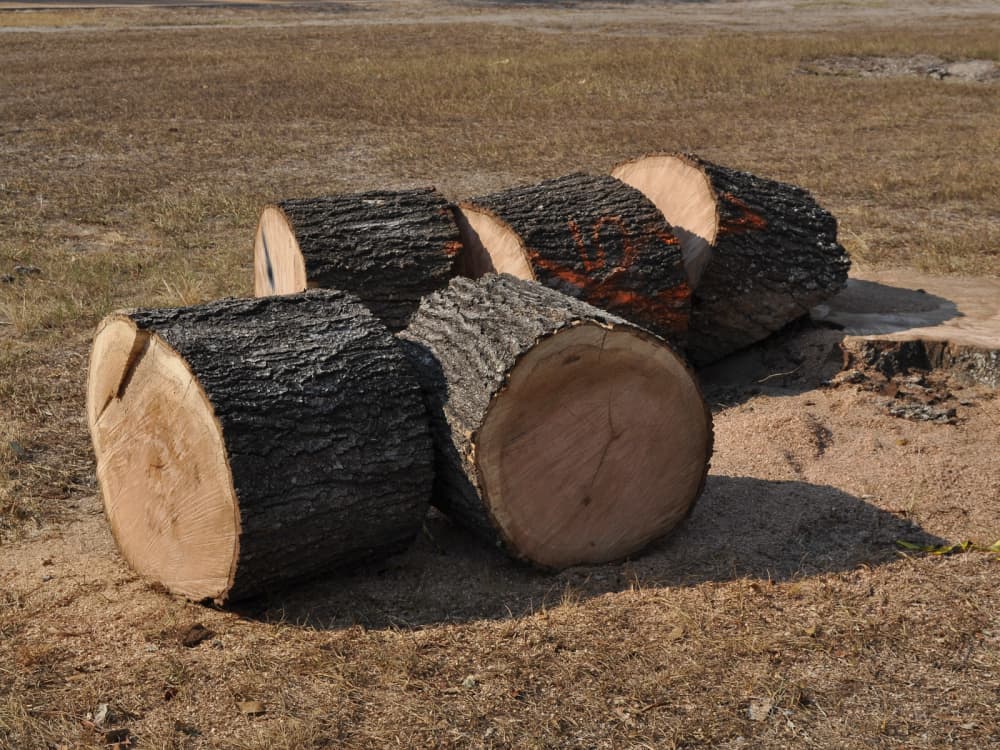Park In Crisis
80 percent of Memorial Park's trees in danger of dying, raising the specter of amassive wildfire
 Dead trees being chopped up in Memorial Park are becoming a common sight.Experts project that between 50 and 80 percent of the trees in Houston's iconpark will die as a result of this drought.Photo by Shelby Hodge
Dead trees being chopped up in Memorial Park are becoming a common sight.Experts project that between 50 and 80 percent of the trees in Houston's iconpark will die as a result of this drought.Photo by Shelby Hodge This beautiful green scene at Memorial Park may only be remembered in photos.
This beautiful green scene at Memorial Park may only be remembered in photos. This is the look of the park for now.Photo by Shelby Hodge
This is the look of the park for now.Photo by Shelby Hodge NYC's Central Park is only half the size of Memorial, and significantly smallerthan Cullen and George Bush parks.
NYC's Central Park is only half the size of Memorial, and significantly smallerthan Cullen and George Bush parks.
Here's something to think about: Memorial Park comprises nearly 1,500 acres inside of the 610 Loop, almost double the size of Central Park in New York City. It ranks 25th in terms of the most visits per year of any city park nationwide.
Home to a golf course, tennis courts, running paths and numerous other facilities, the park is perhaps best known for its heavy forestation.
As CultureMap recently reported, early approximations of the tree losses may have been grossly understated. Sixty six million dead trees in the greater Houston area may have been an underestimation.
Some foresters and analysts consulted by Trees for Houston's Barry Ward are expecting losses of more than half — and up to a staggering 80 percent — of the trees in Memorial Park alone.
"The Memorial Park Conservancy should have a program like the forest service in scale," Ward said.
Ward believes that a persistent, decades-long tree farm program for re-planting should be implemented, so that the park department and the individual park conservancies will be prepared to re-populate the parks after natural disasters and other extreme situations.
Some foresters and analysts are expecting losses of more than half — and up to a staggering 80 percent — of the trees in Memorial Park alone.
Especially in Houston, where hurricanes have had such deleterious effects on the canopy of the parks and the medians of the city streets, Ward argues that this would make fiscal and practical sense. The bill to remove just the dead trees will be at least $4.5 million, and that's not taking into account the impending costs associated with re-planting.
It seems that the Memorial Park Conservancy got the memo, though perhaps a little too late.
Mindy Hildebrand, organization chair, said that the conservancy has been active throughout the drought.
"We have sponsored a water truck and a Timber Ax to help with clearing underbrush," Hildebrand explained in an email. "Clearing is a top priority in order to reduce fuel and to allow new trees to grow (when we get rain). We just completed phase one of our Forestry plan and will continue to work closely with [the parks department] to assist with clearing and the massive reforestation effort. Some planting will take place this winter but realistically a formal reforestation effort will take place in early 2013."
Urban forested parks populated with dead trees are just waiting to catch on fire. Especially during the underbrush clearing effort, when a machine could set off a spark, which could easily ignite an entire forest.
The Houston Parks and Recreation Department is charged with maintaining more than 38,945 acres of park land around the city. Though the department, directed by Joe Turner, employs more than 800 people, it is simply unprepared to handle the workload that comes with a drought of this scope. The city has resorted to hiring private companies to help crews cut down dead trees that pose an immediate threat to citizens.
Ward is concerned that falling limbs aren't the only problem. Urban forested parks populated with dead trees are just waiting to catch on fire. Especially during the underbrush clearing effort, when a machine could set off a spark, which could easily ignite an entire forest. A fire in the dense brush of Memorial Park would be catastrophic for residents of the area, to say the least.
The Memorial Park Conservancy is meeting with the parks department to determine next steps and educate the community on how it can get involved.
Ward said that the most critical time for citizens to help will be in the labor- and cost-intensive, invasive species removal process, as well as the re-planting. Set your sights on 2013 for attacking tallow trees with machetes and digging holes for saplings.
